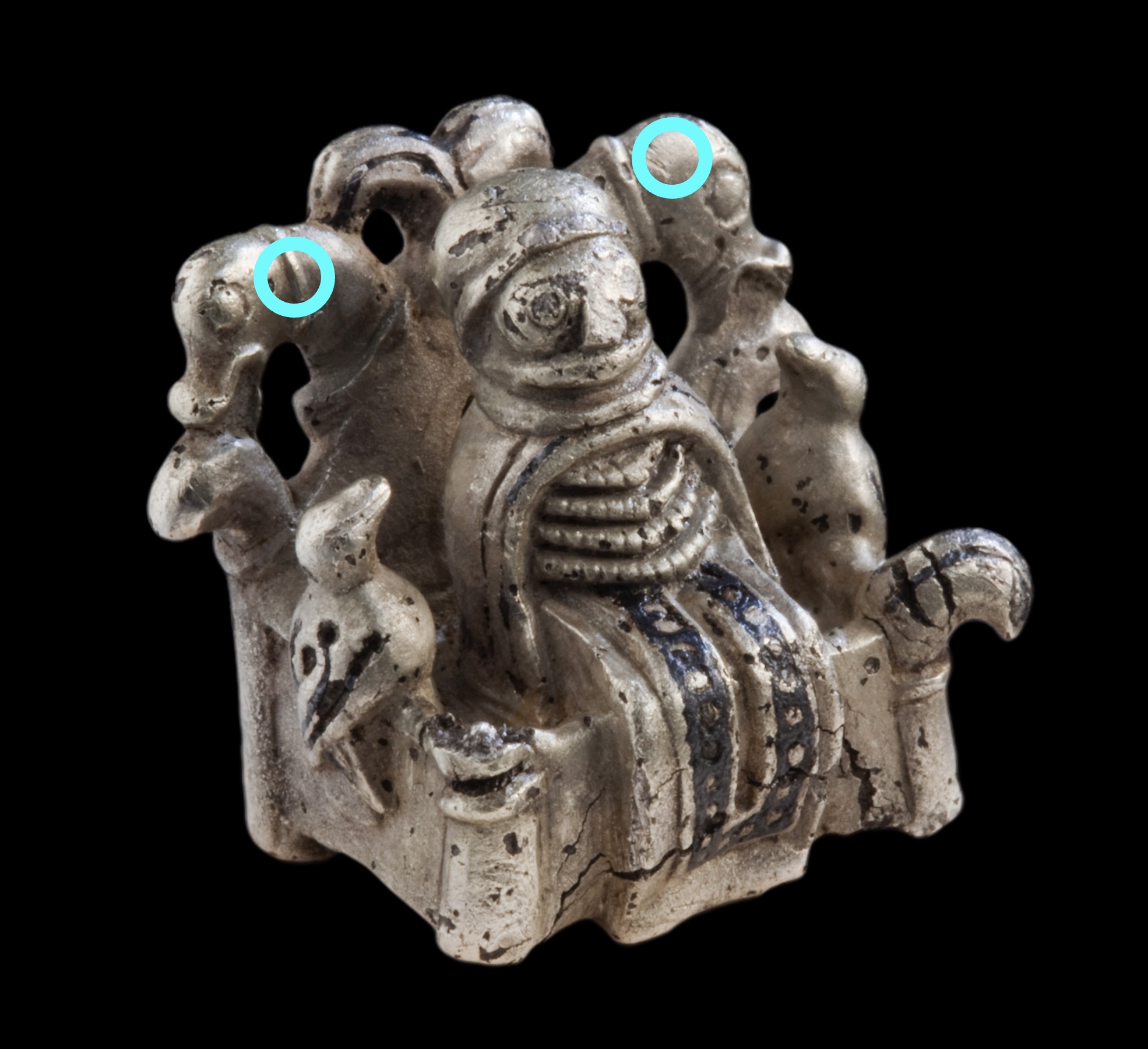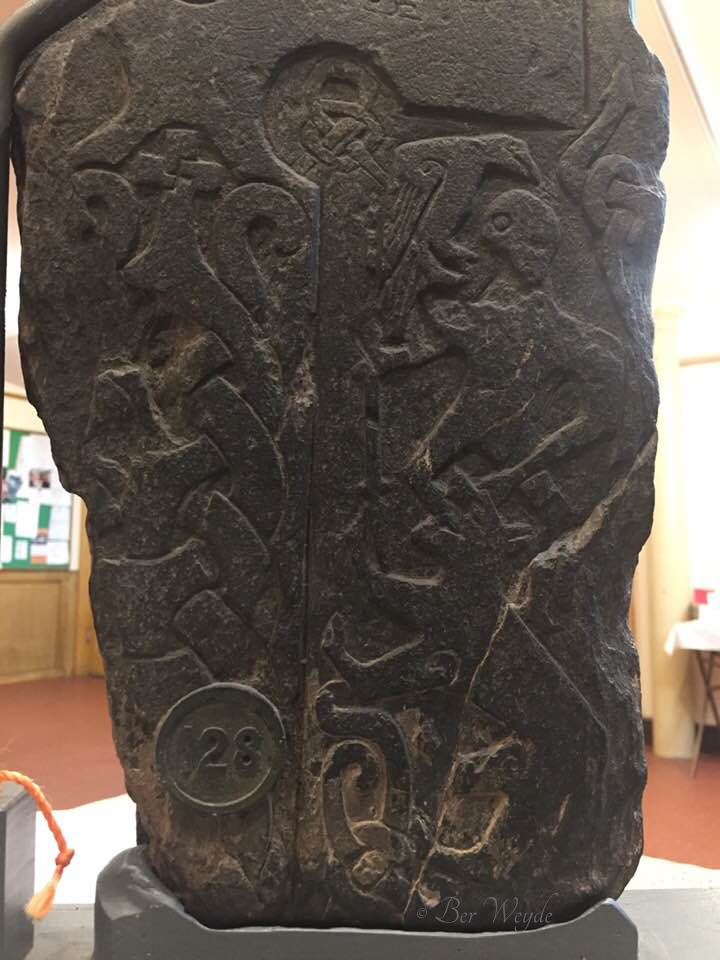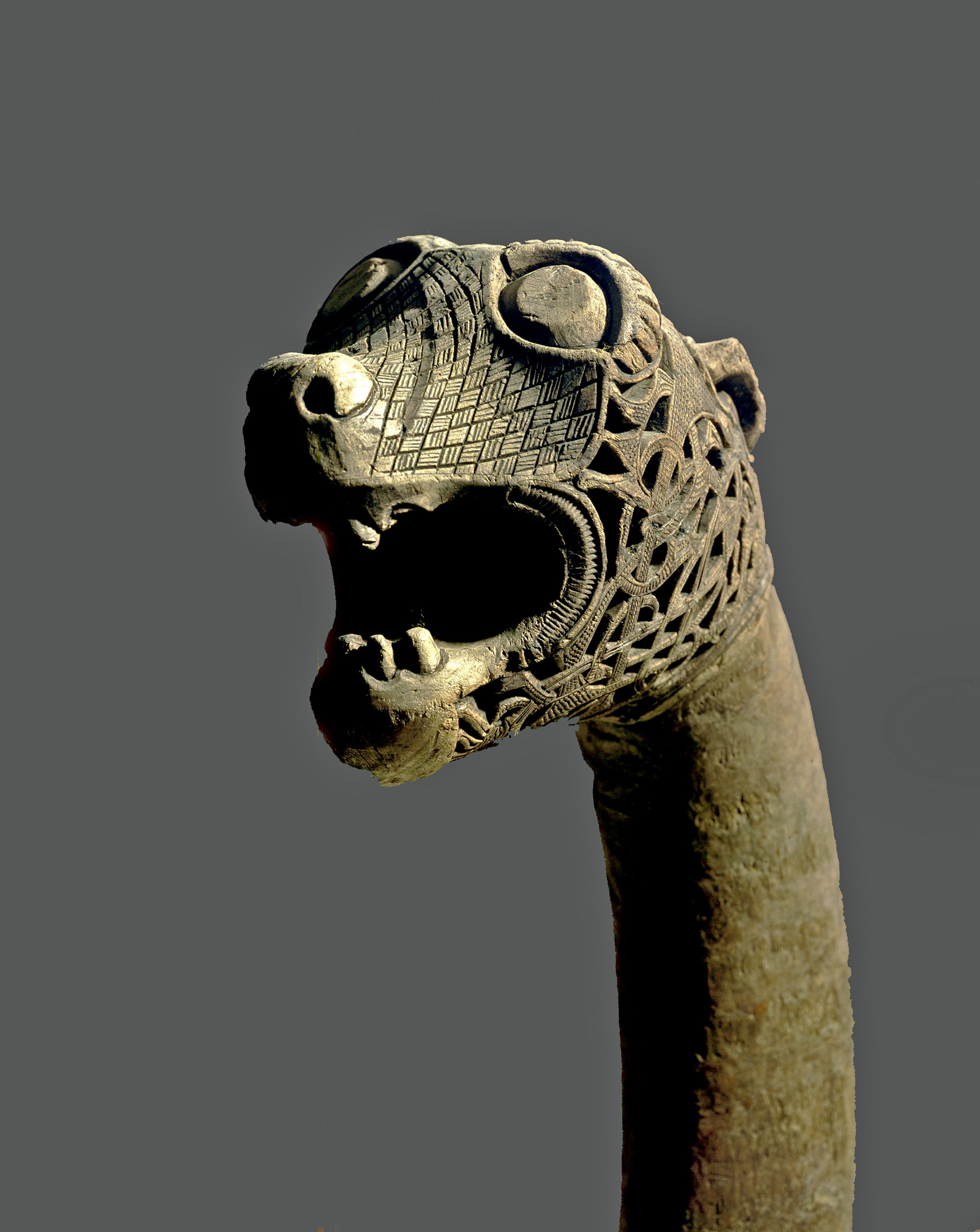As discussed on our page about the find, the heads on the back of the chair are a critical stylistic detail that have helped scholars to date the artifact. The Lejre museum writes that “the back is decorated with two fantastical animal heads, their gaping jaws biting down over the posts.”

Figure from Lejre, DK.
Silver with niello inlay.
1.8×2.0×1.3 cm.
(source: Wikimedia)
Can the heads be classified more specifically than just as “animals”? Some sources would suggest that the answer is yes; one posits that the heads can be interpreted as “Odin’s two wolves, Geri and Freki” (The Viking Rune 2009).
It is hard to compare the animal heads on the back of the Lejre figure to other depictions of Geri and Freki in Viking Art because of the few that do exist, their identification is uncertain. Of the few potential depictions of these two specific wolves that exist, Thorwald’s Cross also includes two birds (Marius 2023), making it ideal for comparison to the Lejre figure.

Thorwald’s Cross
featuring a possible Ragnarok scene
including a figure with a bird
(source: Bernadette Weyde)
Interpreting the heads as Geri and Freki relies on the assumption that the figure in the chair is Odin. If we stop working from this assumption, what other possibilities arise? More importantly, what significance would there be in depicting a Norse God or ruler with animals of this type and in this manner?
Tom Christensen’s analysis of the animal heads focuses on their existence as an element integrated with the chair on which the human figure sits. In contrast to the birds, which sit on the armrests as independent three-dimensional figures, the animal heads are relatively flat and stylized; there might even be a second smaller set of heads emerging from the top. As a result, Christensen argues that the heads on the back of the chair are “portrayed in the stylized manner of carved wooden figures” (2014, p. 68).
Are there examples of Viking Age furniture with ornaments like the beast heads on the Lejre figure? Unfortunately, furniture is one of the material elements of the Viking World that has almost entirely been lost to time. An Oseberg burial in which a “fairly simple seat” was discovered was also the site of five carved “beast-head posts” (p. 66). Christensen speculates that these posts might have been part of a more elaborate chair or throne from the site that could be similar to the one depicted in the Lejre figure.

Oseberg Animal Figure
Wooden beast-head post.
(source: UNIMUS)
Whether the two beast heads are part of an extremely ornamental chair or symbolize two wolf-like companions of the sitter, their inclusion indicates one thing for certain: the Lejre figure is not only a fine object in and of itself, but includes details designed to heighten the perceived power and/or wealth of the sitter. In the case that the heads are modeled after real ornamental chairs, it would also suggest that everyday furniture was not ornately decorated, and that details like beast heads would have been reserved for the furniture of only the elites of the Viking Age.
Christensen, Tom. 2014. “A Silver Figurine from Lejre.” Danish Journal of Archaeology 2, no. 1: 65–78. (online)
Marius. 2023. “Geri and Freki: Odin’s Loyal Wolves.” Norse Mythology & Viking History. (online)
The Viking Rune. 2009. “Odin from Lejre: A Controversial Archaeological Find.” (online)
« Previous | Home | Next »